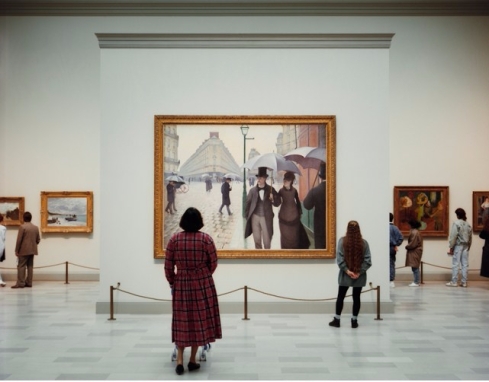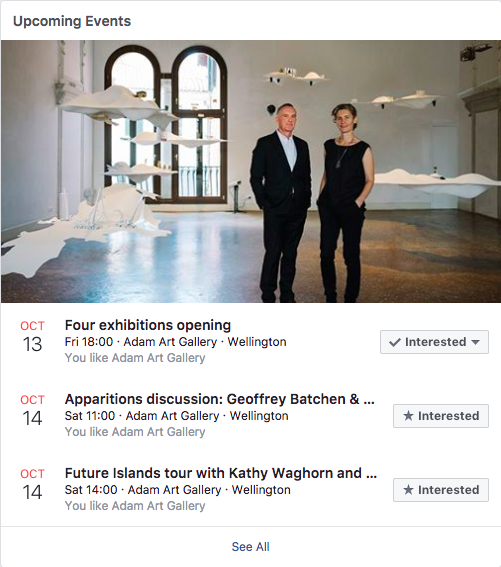
As Jason Farman asserts, “storytelling is important for the production and practice of space because the meaning of a space is typically communicated through the stories attached to those spaces”. Basically, a space’s social, cultural or historical importance must be known and shared in order for it to have meaning within a community. Within the context of the Adam Art Gallery, this is a particularly important concept; each exhibition seeks to tell a story and art necessitates the interpretative agency of its viewer.
The most visible and static representation of the gallery, however, is provided by the gallery itself: on the official website, the space is introduced as “a vital platform for critical thinking across media, disciplines, cultures and contexts”.
The gallery’s social media, including Facebook, Instagram and Twitter, provide a behind-the-scenes and in-the-moment look into the workings of the gallery. The social and networked dimensions of these platforms are a way in which the story of this space becomes (or could become) collaborative, accessible and holistic.

Though less visible than the gallery’s own account, these networks afford individuals to document their own experience of the space and contribute to the overall narrative of why the gallery is meaningful and what it can offer a visitor. This exemplifies the “doubleness and multiplicity of experience” in virtual documentation discussed by Farman that “[allows] us to trace the meaningful connection between spatial production, communities, and technology”.
Community participation in storytelling is a valuable and underused commodity; personal contributions authenticate the narrative and affirm the gallery as a place that “embodies” something meaningful to those who visit it. This public virtual conversation could be integrated into the space and given more weight in the gallery’s representation.
Democratisation and elitism of art will make for an interesting enquiry regarding accessibility and marginalisation. In building a digital story, I should be able to investigate to what extent the “ephemeral narratives [of social media] stand in contrast to durable stories” and negotiate this relationship to fully capitalise on user participation.